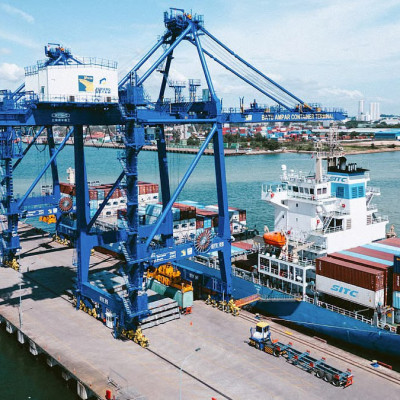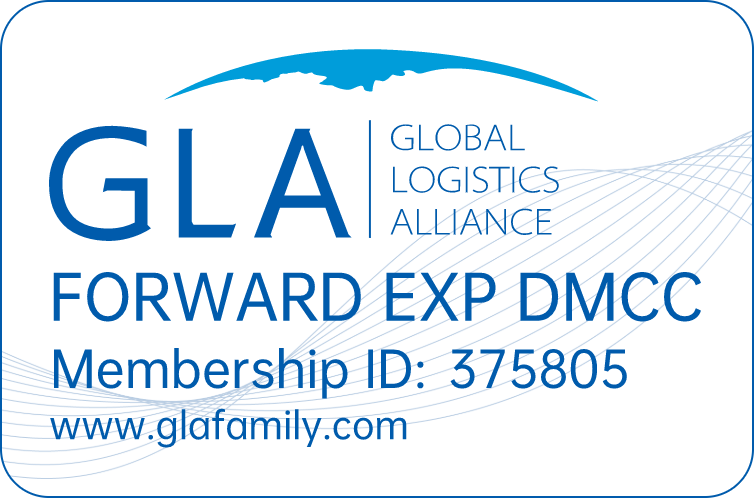Multi-Modal Transportation
Organisation of multi-modal transportation by sea, road and rail from South-East Asia to northern Europe and the Baltic states.
Insurance
Cargo insurance, consolidation and storage of goods in the warehouses of our partners.
Partners
We ensure fast orders processing, delivery in time and competitive prices. Our partners are the largest, best trucking companies and customs warehouses.
News

Batu Ampar North Pier Moves to a Unified Operator Model
01.12.2025
Starting December 1, all operations at the North Pier of Batu Ampar Port (Batam, Indonesia) will be consolidated under a single operator. Management will be assumed by Batu Ampar Container Terminal (an ICTSI subsidiary) in partnership with Interport Mandiri Utama, with the involvement of Batam Terminal Petikemas, granting the group full port-operator rights and responsibilities.
According to ICTSI, unifying the operational structure will raise service standards, improve efficiency, and strengthen Batu Ampar Port’s position as a regional logistics hub. The North Pier is equipped with modern infrastructure, offering an annual capacity of 900,000 TEU, a 1,032-meter quay, 5 quay cranes, 12 RTGs, and 10 electric terminal tractors, with the fleet expected to expand to 25 units soon.
ICTSI notes that the transition to a single-operator model will help shorten vessel turnaround times and enhance overall service reliability.
International Container Terminal Services, Inc. (ICTSI) is a global port operator founded in 1988 in the Philippines. It is controlled by Filipino businessman Enrique K. Razon Jr. through the Razon Group.

Capital Clean Energy Carriers Continues Full Exit from the Container Shipping Market
24.11.2025
Capital Clean Energy Carriers (CCEC), listed on Nasdaq and controlled by Greek shipowner Evangelos Marinakis, has taken another major step in its strategic withdrawal from the container shipping sector. The company has agreed to sell Buenaventura Express — one of its two remaining container vessels (13,312 TEU, built 2023). The handover to the new owner is expected in Q1 2026.
The deal will generate approximately $4.4 million in accounting profit, with proceeds used to repay around $84.4 million in debt and support general corporate needs. The sale is fully aligned with CCEC’s long-term strategy to focus on LNG and next-generation energy carriers, leaving the container segment behind.
Since February 2024, CCEC has sold or contracted the sale of 14 container ships, generating roughly $814.3 million in total proceeds.
Once Buenaventura Express leaves the fleet, CCEC will retain just one neo-Panamax containership, operating under a long-term charter through 2033 with an option to extend to 2039.
Today the company operates a fleet of 14 vessels, including:
- 12 modern LNG carriers
- 2 container vessels (one already sold and awaiting delivery)
- Its orderbook includes 16 new LNG and gas carriers scheduled for delivery in 2026–2027.
About CCEC:
Capital Clean Energy Carriers was established as a dedicated energy-focused subsidiary of the Marinakis shipping group. The company has been rapidly transforming into a pure-play LNG and clean gas carrier operator, completing its gradual exit from container shipping.

Suez Canal Makes a Comeback: Shipping Giants Return After Two Years
06.11.2025
The Suez Canal is officially making waves again
After months of decline due to regional tensions, October marked the best month in two years for vessel transits through the canal. The Suez Canal Authority (SCA) reported a 10% rise in total tonnage between July and October, with more than 4,400 ships passing through — including 229 returning vessels last month alone.
To keep the momentum going, SCA Chairman Admiral Ossama Rabiee met with representatives from 20 major shipping companies to discuss the latest developments in the Red Sea and Bab el-Mandeb. His message? “We’re open — and ready to welcome you back.”
Among the highlights:
- CMA CGM has begun trial voyages with 17,000+ TEU ships and plans to increase traffic through the canal.
- MSC expects a swift return of southbound vessels soon.
- Evergreen and COSCO both confirmed readiness to resume full operations once conditions stabilize.
However, as Inchcape Shipping Agency noted, high marine insurance costs remain a key obstacle delaying some carriers’ return.
Still, optimism is rising — and the Suez Canal appears ready to reclaim its role as a vital artery for global trade.
Services

Multimodal Transportation
Multimodal freight transportation with Forward is our network of reliable agents around the world. Through direct agreements with major shipping lines, we serve all routes required by our Customers. Our low prices are achieved through extensive shipment volumes, along with our specialized unit’s decade-long experience in dealing with sea, air, and land transportation.
Possible transport combinations:
- sea freight + road freight;
- rail freight + sea freight + road freight;
- sea freight + rail freight;
- air freight + road freight;
- sea freight + air freight.
The benefits of container shipments
A sea container is a universal cargo unit with standard dimensions. A container is the most common and practical transport unit in multimodal shipments. Container goods are transported by different modes of transport from door-to door without excessive transshipment. Containers could be delivered to a Customer by sea, rail, road, or air transport, or any combination of the above. Container goods have a faster handling in transit and within transshipment that results in a lower shipment cost. And the safety of the goods is guaranteed. Strong partnerships with well-known maritime companies and container lines allow us to deliver goods of any category and complexity.
- Sea and rail freight container shipping allows cargo to be delivered safely, regardless of weather conditions;
- Goods are loaded into a container once at the shipper’s, and unloaded at the recipient’s warehouse;
- The sealing of cargoes guarantees an additional layer of safety for the transported goods;
- Our Customer manager provide expert advice and calculate alternative delivery options for the Customer;
- Electronic document management and web-cabinets improve the quality and speed of engagement.


Rail Freight
Our portfolio of Partners include leading rail operators and train & wagon owners.
- We offer a selection of alternative routes of cargo shipments depending on the Customer's desired price, delivery time, and point of destination. Included are fast container trains, group, and carload shipments;
- Rail international and domestic transport;
- FCL and LCL rail freights;
- Transportation of cargoes in special temperature conditions or with the use of specialized containers.
Customs Clearance
We offer customs clearance at all customs offices:
- Assistance in obtaining of required licenses and certificates for import or export.
- Last mile delivery of cleared cargoes.
- Drawing up of requisite licensing and certification documentation.
- Delivery of a cargo released for free circulation to the Customer’s warehouse.

You can be calm
Aside from arranging appropriate vessel we also handle the related formalities along with constant tracking of the shipment while it’s in transit using the sophisticated system empowered by our efficient global partners.
Contact
Location:
Office: 810, Jumeirah Bay X2 JLT, cluster X, Dubai, United Arab Emirates
Alexandr
Executive Director
Mob. +971585733856
Alex.kh@forwarddmcc.ae
Dinesh Vattompadath
Commercial Director
Mob. +971 50 248 7049
Dinesh.V@forwarddmcc.ae





